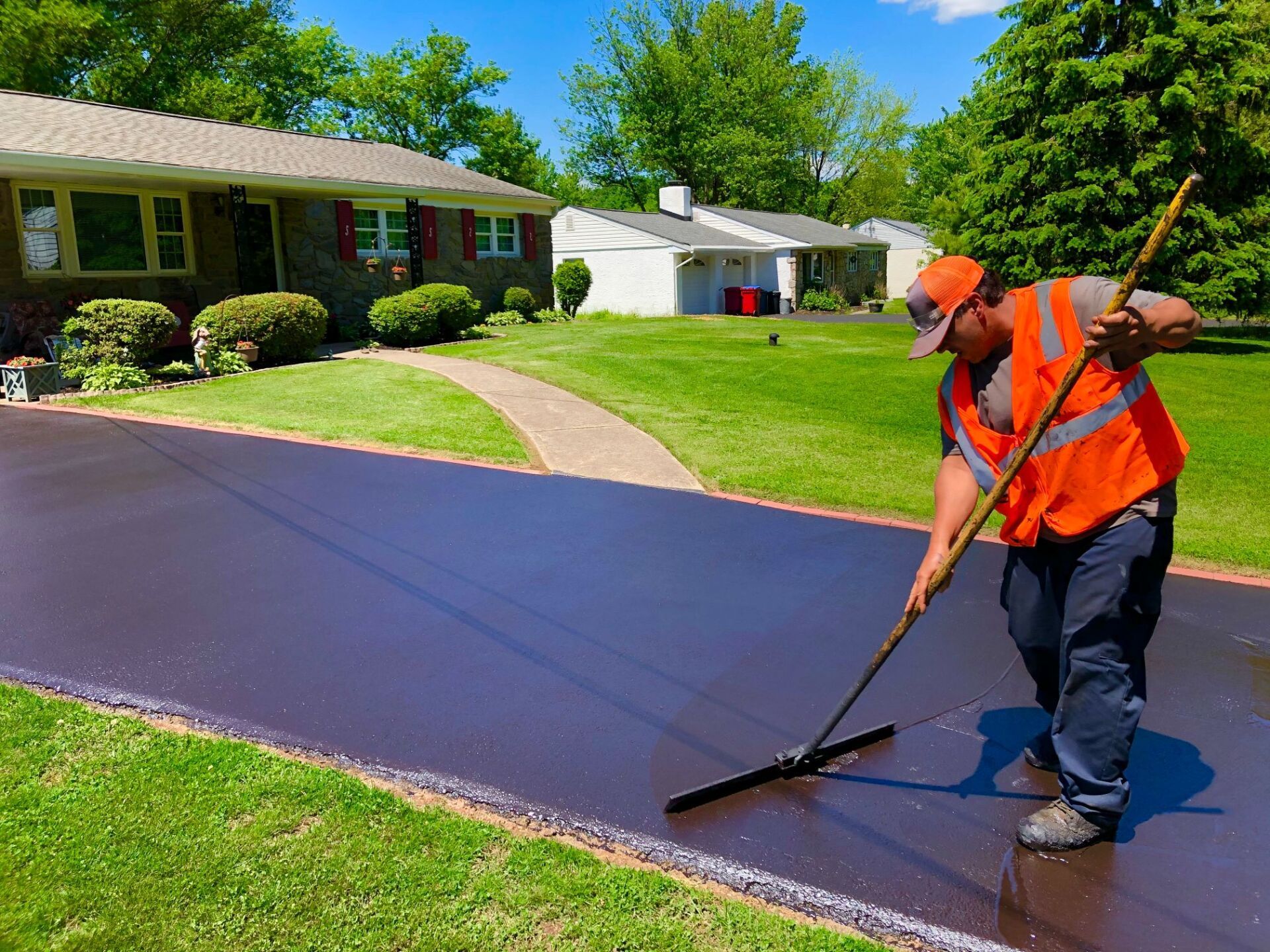Hot Mix Asphalt: A Sustainable Remedy for Pavement
Hot Mix Asphalt (HMA) has arised as a leading lasting selection for sidewalk solutions, offering a myriad of ecological advantages and innovative modern technologies. As the demand for green building and construction techniques grows, discovering the nuances of HMA's sustainability can provide valuable understandings right into the future of pavement services.
Ecological Advantages of Hot Mix Asphalt

Additionally, Warm Mix Asphalt aids to mitigate metropolitan warmth island impacts. Its dark shade takes in sunshine, minimizing the quantity of warm mirrored back into the atmosphere compared to lighter-colored pavements. This can decrease ambient temperature levels in city areas, decreasing the need for air conditioning and inevitably reducing energy consumption.
Furthermore, Warm Mix Asphalt adds to boosted stormwater administration. Its porous nature enables water to recharge and infiltrate the sidewalk groundwater materials, lowering drainage and the danger of flooding. These ecological benefits make Hot Mix Asphalt a lasting option for leading highways and roadways.
Power Performance in HMA Production
Is energy efficiency a crucial factor in the manufacturing of Hot Mix Asphalt (HMA)? Energy plays a significant function in the manufacturing of HMA, affecting both expense and environmental sustainability. One key aspect of power effectiveness in HMA production is the use of cozy mix asphalt (WMA) innovations.
Furthermore, advancements in plant innovations have actually led to more energy-efficient HMA manufacturing procedures. By maximizing power use in HMA manufacturing, the industry can minimize its carbon impact while keeping high-quality pavement products.
Recyclability of Warm Mix Asphalt
The recyclability of Hot Mix Asphalt (HMA) is a critical facet of its sustainability and long-term environmental influence. HMA is one of the most recycled products in the United States, with over 100 million loads of recovered asphalt sidewalk (RAP) being reused yearly in brand-new pavement construction. Reusing HMA uses numerous ecological advantages, such as lowering the need for virgin materials, decreasing energy consumption during manufacturing, and lowering the quantity of waste sent out to land fills.
The process of recycling HMA includes grating the existing pavement, squashing it right into smaller items, and blending it with brand-new aggregate and asphalt binder to create a recycled mix. Generally, the recyclability of HMA plays a considerable duty in advertising sustainable practices within the sidewalk industry.

Long-Term Performance of HMA
Asphalt pavements demonstrate durability and durability over an extended period, showing the long-term efficiency of Hot Mix Asphalt (HMA) In addition, advancements in HMA technology, such as the use of polymer-modified binders and cozy mix asphalt, have actually even more boosted the resilience and durability of HMA pavements. By focusing on top quality building and upkeep techniques, HMA proceeds to show itself as a lasting and cost-effective remedy for lasting pavement facilities.

HMA: Resilience and Sustainability
Showing both toughness and discover here sustainability, Warm Mix Asphalt (HMA) has come to be a foundation in the building and construction of lasting pavement infrastructures - angled parking. HMA's sturdiness originates from its capacity to stand up to heavy tons, harsh climate condition, and high traffic volumes, making it a reliable choice for streets, highways, and airport runways. The composition of HMA, which typically consists of aggregates, binder, and filler, plays a vital role in improving its longevity and resistance to tear and wear
Furthermore, HMA's sustainability lies in its recyclability and energy-efficient production process. The capability to reuse reclaimed asphalt sidewalk (RAP) in new HMA combinations reduces the demand for virgin products and decreases the environmental impact of sidewalk construction and upkeep. In addition, the energy performance of producing HMA depends on its lower blending temperature levels contrasted to other pavement materials, bring about reduced power consumption and greenhouse gas discharges.
Conclusion
In conclusion, warm mix asphalt (HMA) provides a lasting service for sidewalk with its eco-friendly features. HMA's recyclability, power effectiveness in manufacturing, and long-lasting toughness make it an environment-friendly option for roadway building. By saving natural deposits, lowering waste, and lowering greenhouse gas emissions, HMA plays an important function in promoting sustainability in facilities development. Its capability to mitigate city heat island effects even more emphasizes its value in developing environmentally mindful and resistant pavement systems.
HMA is one of the most recycled materials in the United States, with over 100 million bunches of recovered asphalt sidewalk (RAP) being recycled every year in brand-new sidewalk construction.The procedure of recycling HMA involves grating the existing pavement, squashing it right into smaller sized items, and blending it with brand-new aggregate and imp source asphalt binder to develop a recycled mix.Asphalt sidewalks show resilience and strength over an extensive period, mirroring the long-term efficiency of Warm Mix Asphalt (HMA) In addition, advancements in HMA technology, such as helpful site the use of polymer-modified binders and warm mix asphalt, have actually additionally improved the durability and longevity of HMA pavements. The ability to reuse redeemed asphalt pavement (RAP) in new HMA combinations minimizes the demand for virgin products and decreases the ecological effect of sidewalk construction and upkeep.